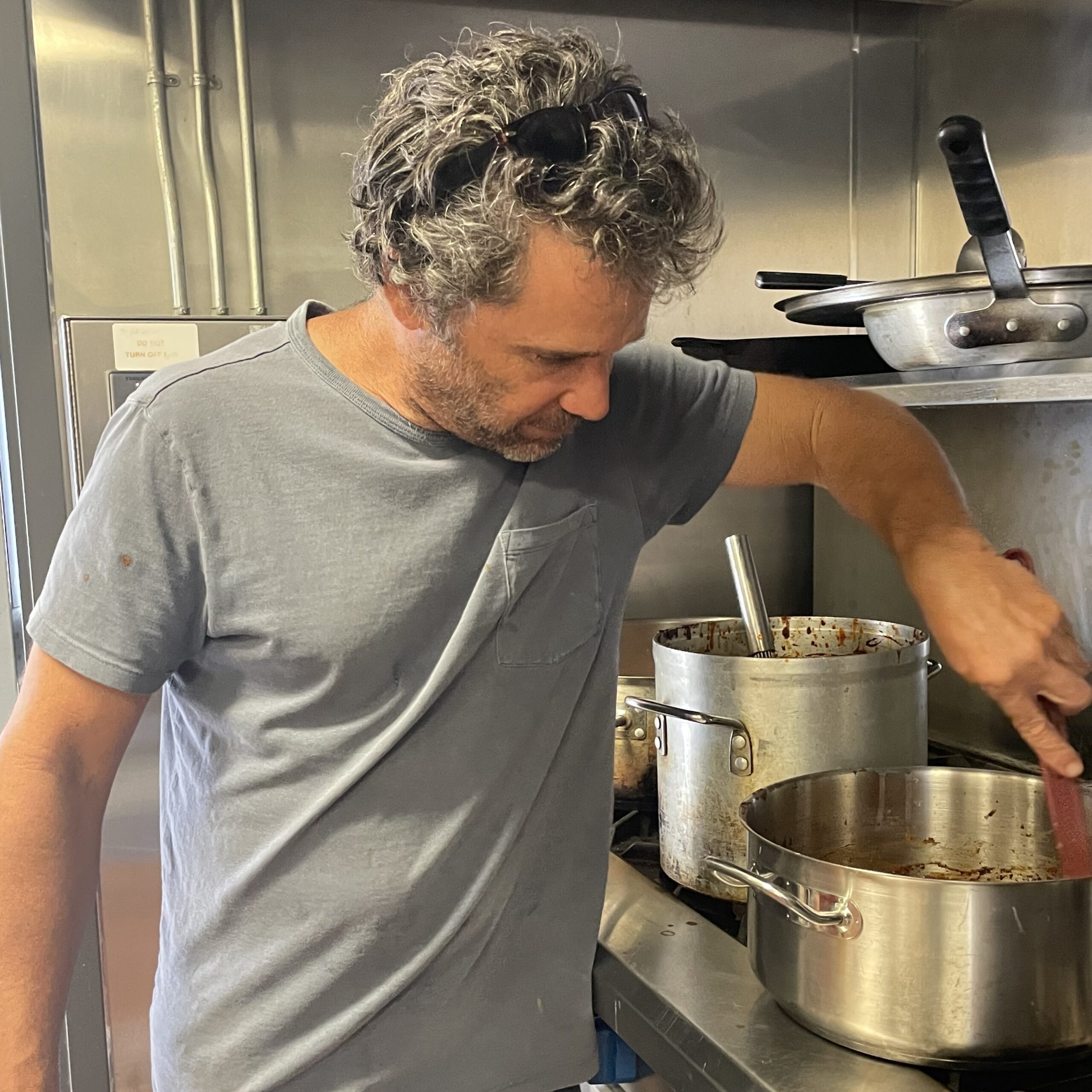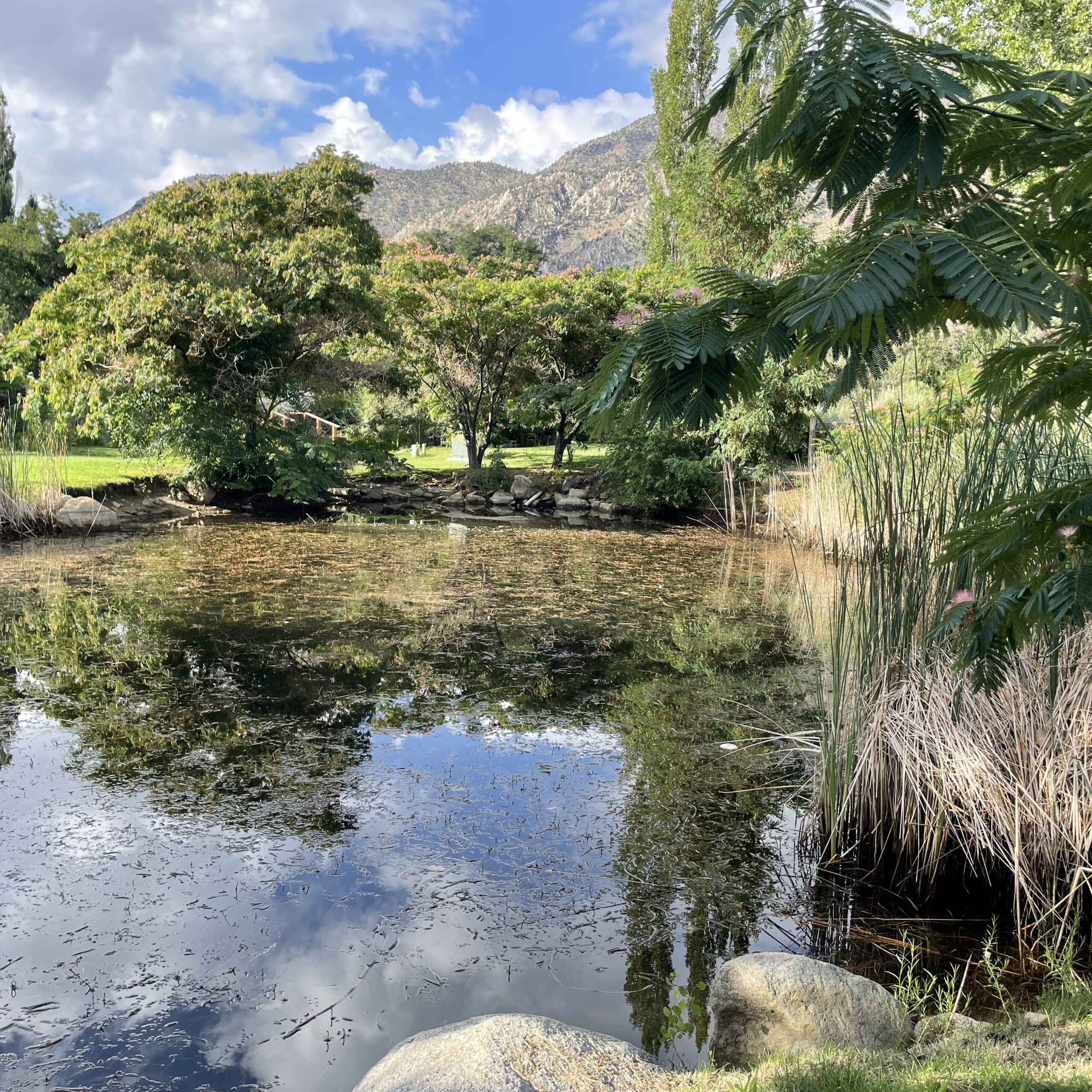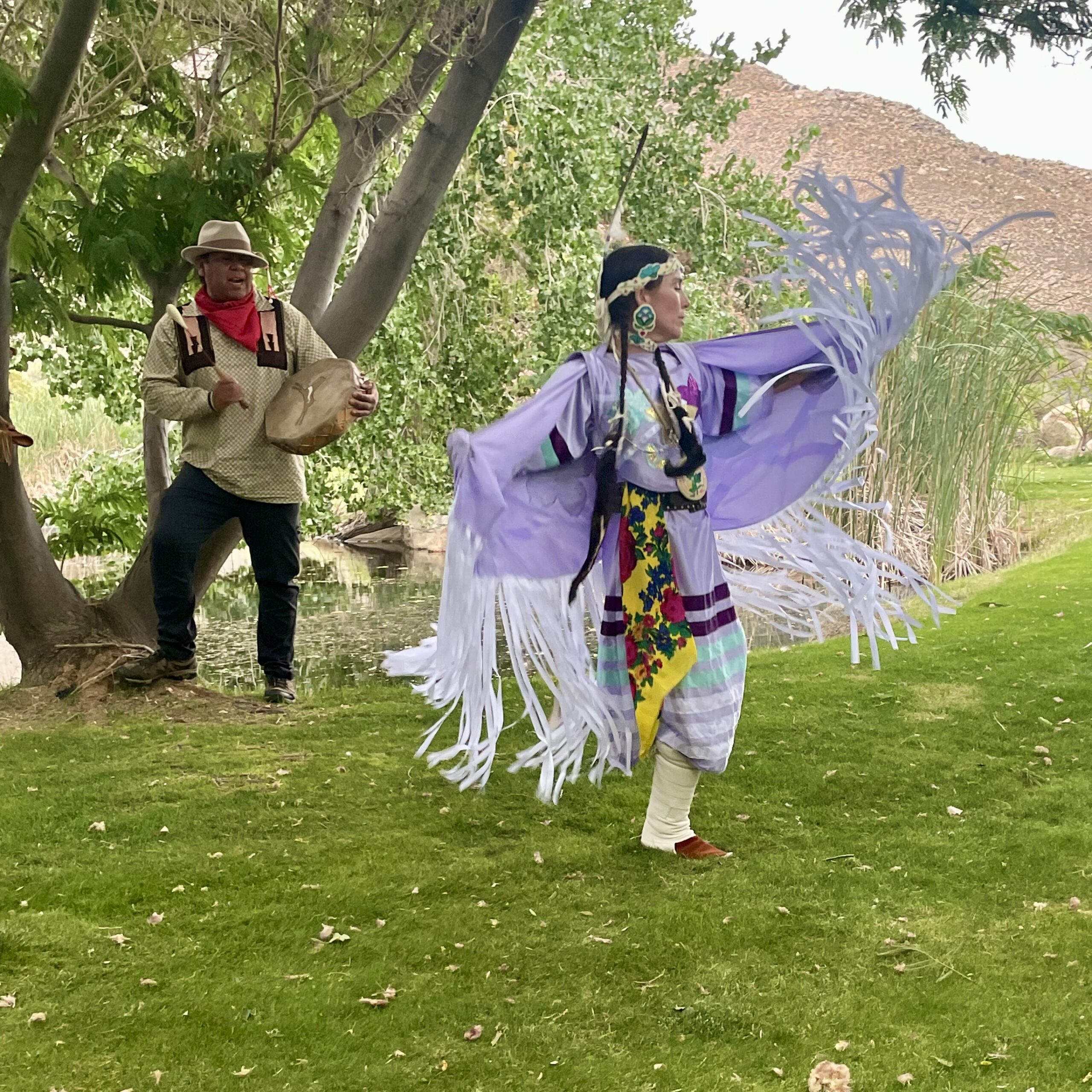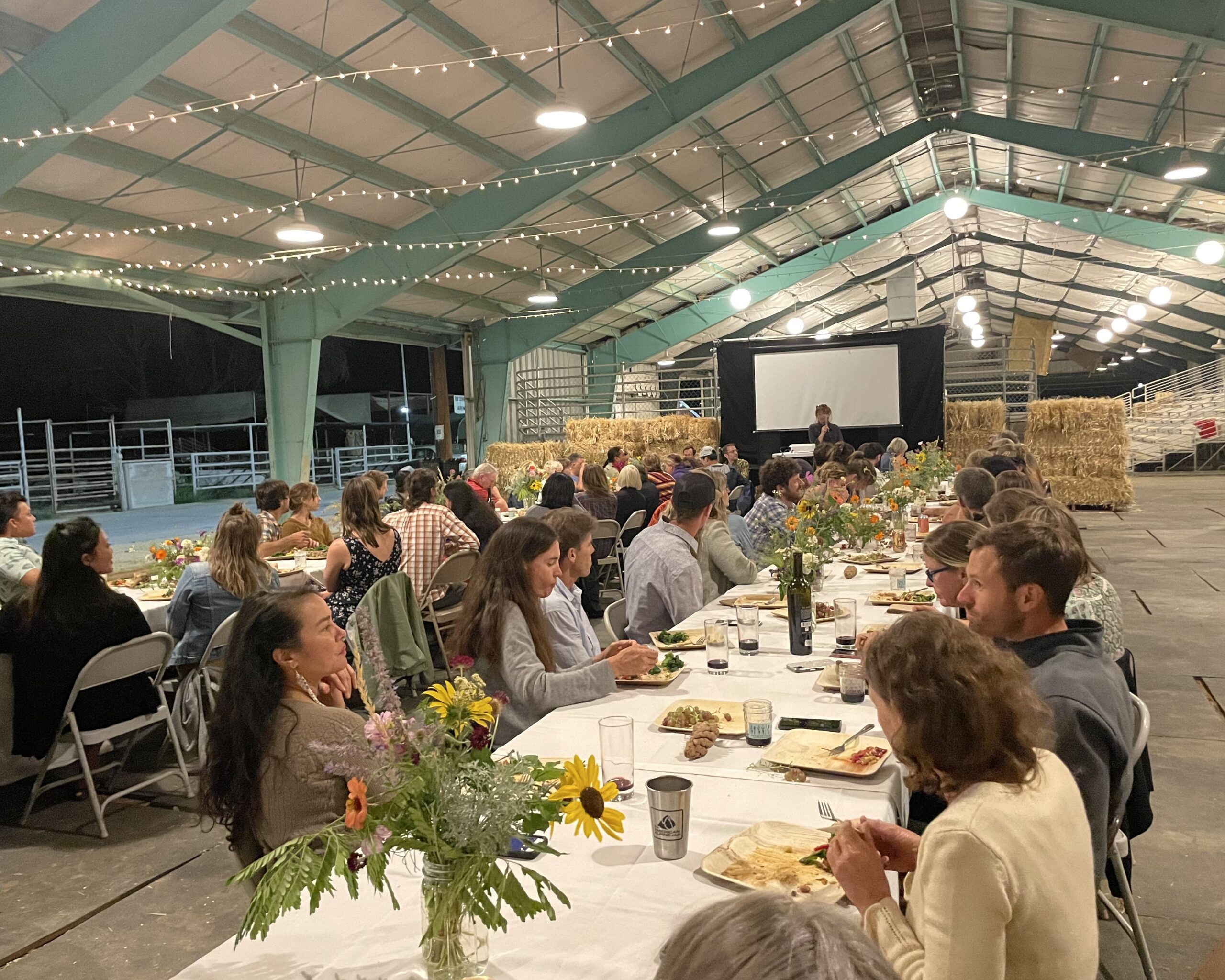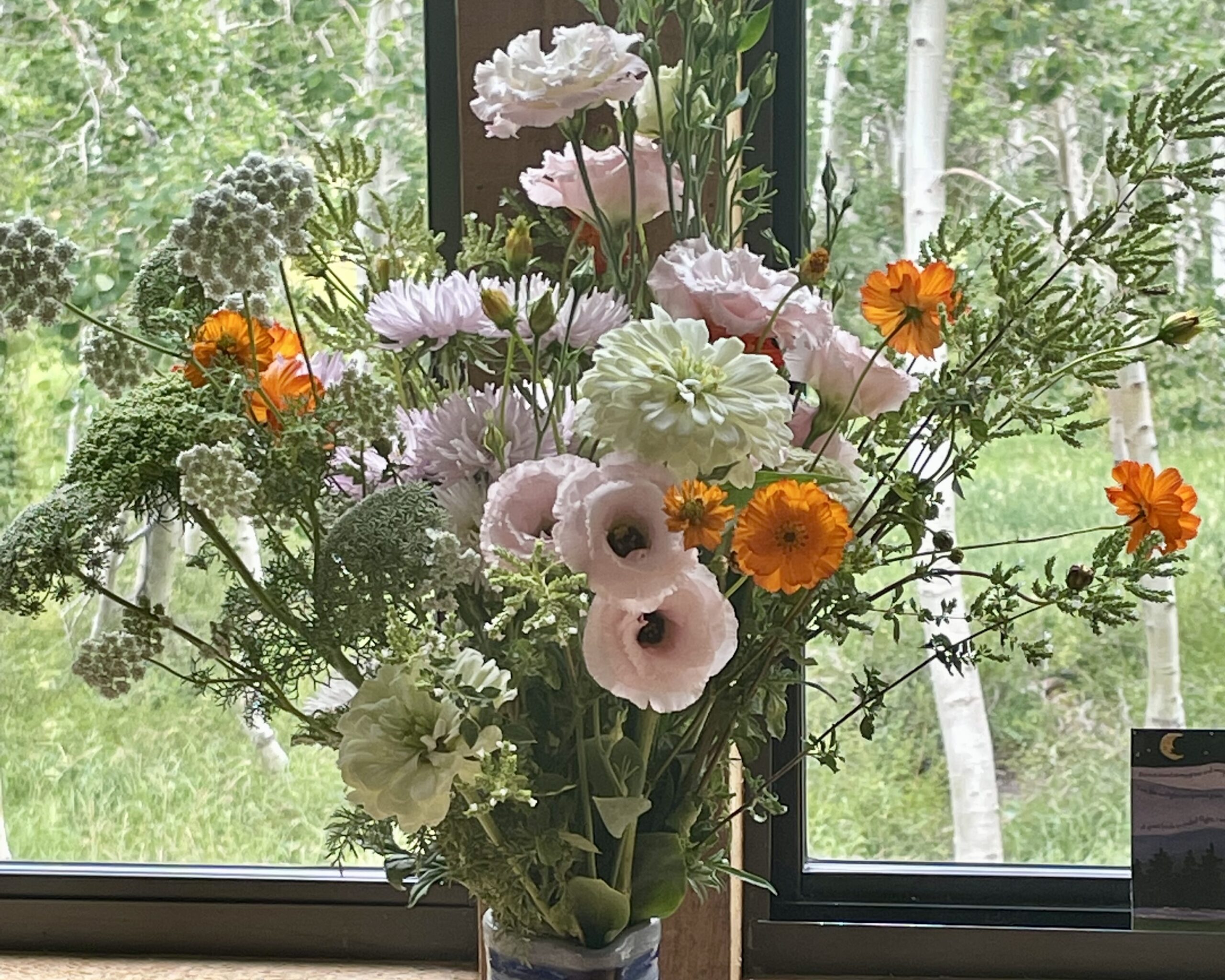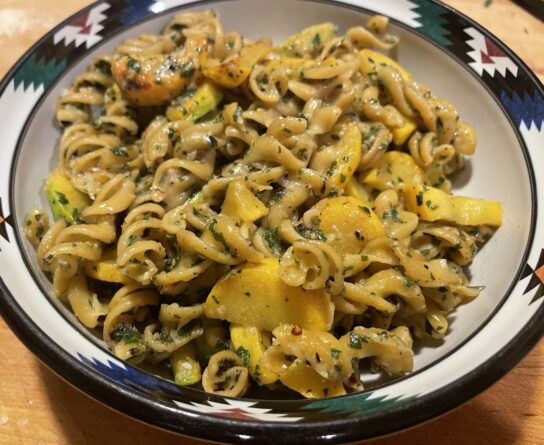
I drove up to Bishop to attend a sustainable event at my favorite farm, Apple Hill Ranch. The day was sponsored by Farm to Crag, a non-profit organization that encourages rock climbers to eat local, sustainable food to help care for our planet. Bishop is a popular destination for climbers and Apple Hill is located in Bishop, so it was a perfect blend. I figured being a dedicated Sierra hiker and shopper at the farm, I was aligned closely enough to qualify to join the occasion.
The day began with breakfast at the farm, featuring local pastries accompanied by figs, grapes and peaches picked that morning. Then Rick DeVore, the owner and creator of this oasis in the middle of high dessert scrubland, led a tour. Although I’ve been picking fruit and buying vegetables there since I discovered the farm nearly 3 years ago, I learned about Rick’s and his wife Lauralee’s vision and how they transformed rock and sage into a high yielding orchard and farm. It triggered an even deeper appreciation for this gift to the community. When we came to the carrot patch, Rick encouraged me to create a recipe using the carrot tops, and you’ll find that recipe below.
When the climbers took off for an afternoon climbing Bishop’s astonishing rock formations, I was privileged to assist chef Daniel Molnar prepare the dinner. Dan is a caterer who creates special meals for clients in nearby Mammoth Lakes, a prosperous ski town. The kitchen was filled with bushels of fresh onions, zephyr squash, peaches and plums, all from Apple Hill, for the feast. Dan crafted a rich beef mole, using local brisket provided by Barbwire Beef. Fitting the sustainable theme of the day, this is 100% grass-fed and grass-finished beef, raised exclusively on free-range pasture and locally grown hay. The fruit was transformed into a comforting, old-fashioned dessert crisp, similar to the one I recently posted.
Steve flew up from LA to Bishop, to attend the dinner. The evening festivities began at the farm, where appetizers were served around the pond. Kate Rutherford, founder of Farm to Crag, spoke about the importance of choosing local, sustainably raised food to help curb climate change. Members of the AkaMya Native American Cultural Group performed a fancy shawl dance to help connect us to Payahuunadu, the name native tribes use to refer to the Eastern Sierra. Payahuunado means land of flowing water. The now dry Owens Valley was once filled with apple orchards, and Rick and Lauralee DeVore have recreated that lushness on their farm, an outstanding illustration of the magic of organic farming.
Because a storm was approaching, we moved to a barn at the Bishop Fair grounds for dinner. The barn was festooned with twinkle lights and the tables decorated with locally grown flowers from Alpenglow Gardens. After the meal celebrating local ingredients, a panel of experts on sustainable food spoke. Ryan Peterson, from the Climate Farm School, gave a talk about regenerative agriculture that was so eye-opening, I’m eager to start taking their classes.
This is a long winded, but I hope interesting, introduction to the recipe here for Pasta with Carrot Top Pesto and Summer Squash. Carrot tops add a nutty, earthy quality to the pesto, but the dish is equally as good when made with all basil leaves. ZENB Pasta is a treat for those of us who follow a gluten-free diet. Of all the gluten-free pastas I’ve tried, this one is the closest in both flavor and texture to traditional semolina pasta, with the extra bonus of being loaded with protein and fiber, making it a healthful choice for everyone.
I created this dish to honor Apple Hill Ranch and the joy of picking local food for our tables. My wish is that the happy combination of textures and flavors bring happiness to your home.
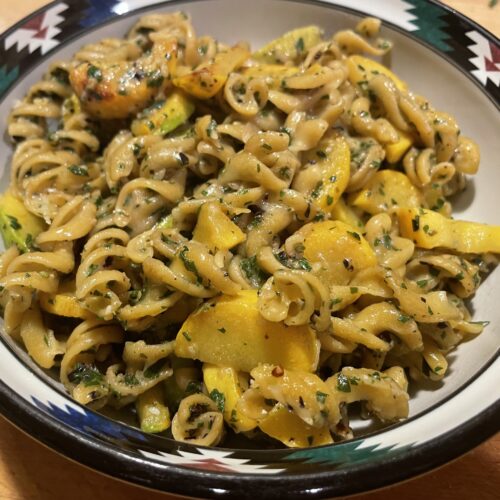
Pasta with Carrot Top Pesto and Squash
Kristine KiddIngredients
Carrot Top Pesto
- 1 cup (packed) fresh basil leaves
- ⅔ cup (lightly packed) fresh carrot tops (or basil leaves)
- ¼ cup walnuts
- 1 small shallot, chopped
- ¼ teaspoon coarse kosher salt
- ⅓ cup extra-virgin olive oil
- ¼ cup freshly grated Parmesan cheese
- 1 teaspoon fresh lemon juice
- Freshly ground black pepper
Pasta
- 1½ tablespoons extra-virgin olive oil
- ½ large onion, chopped
- 1 pound summer squash such as zephyr, yellow or zucchini, trimmed, halved lengthwise, sliced into half rounds
- Coarse kosher salt and freshly ground black pepper
- ⅛ teaspoon red pepper flakes
- 8 ounces gluten-free rotini or other short pasta, especial ZENB
- ⅓ cup pesto
- ½ cup freshly grated Parmesan cheese, plus more for serving
Instructions
Carrot Top Pesto
- Combine the basil, carrot tops, walnuts, shallot and ¼ teaspoon salt in a food processor. Process until everything is very finely chopped. With the machine running, gradually add the oil. Add the Parmesan and lemon juice and process just to blend. Season generously with black pepper and salt to taste. (Can be prepared up to 5 days ahead. Transfer to a small container, pour oil over to cover, then cover and refrigerate.)
Pasta
- Heat the oil in a heavy large skillet over medium heat. Add the onion and sauté until beginning to softer, about 4 minutes. Add the squash slices and sprinkle with salt and black pepper. Sauté until the squash softens, about 10 minutes. Sprinkle with the red pepper flakes and stir.
- Meanwhile, add the pasta to a large pot of boiling salted water and stir. Return the water to a boil and cook until the pasta is tender but still firm to the bite, stirring occasionally. I start checking 2 minutes before the time suggested on the package. Reserve 1 cup of the pasta cooking water, and then drain the pasta.
- Add the pasta to the skillet with the squash. Add ⅓ cup of the pesto and stir to coat. Add ½ cup of the Parmesan. Add enough pasta cooking liquid to loosen the texture. Season to taste with salt and pepper.
- Serve the pasta, offering more cheese to sprinkle on top.



